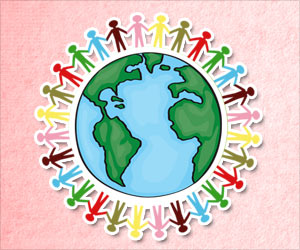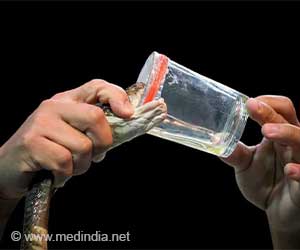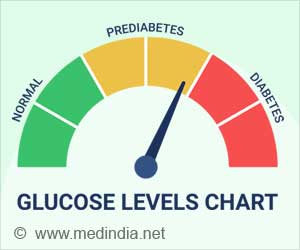World Hemophilia Day is celebrated on 17th April every year. It aims to generate awareness about hemophilia. This year’s focus is on adapting to change and sustaining care in a new world in the wake of COVID-19.
- World Hemophilia Day is celebrated on 17th April every year
- It aims to generate awareness about hemophilia and other inherited bleeding disorders
- This year’s theme is adapting to change and sustaining care in a new world, which has arisen due to the COVID-19 pandemic
This international event is meant for enlightening and educating the general public, as well as motivating policymakers, public health officials, corporates, non-governmental organizations (NGOs), scientists, and healthcare professionals to do their bit to improve the lives of people suffering from hemophilia.
World Hemophilia Day celebrations are being organized by WFH since 1989. The WFH is an international non-profit organization, officially recognized by the World Health Organization (WHO) for providing global leadership for improving the lives of people suffering from hemophilia and other inherited bleeding disorders, including von Willebrand disease, among others.
It was established in 1963 by Frank Schnabel, with its headquarters in Montreal, Canada. It has branches across 140 countries, including India, Canada, UK, USA, and EU countries, among many others.
The vision of WFH is to ensure “Treatment for All” so that everyone everywhere suffering from inherited bleeding disorders has access to appropriate quality treatment.
TOP INSIGHT
World Hemophilia Day is celebrated annually on 17th April. It generates awareness about hemophilia. This year it’s focusing on adapting to change and sustaining care in a new world in the wake of the COVID-19 pandemic.
Read More..
History of World Hemophilia Day
The origin of World Hemophilia Day dates back to the 10th century AD, when hemophilia was first discovered. This important discovery was made by Al-Zahrawi, an Arab doctor who is considered to be the greatest surgeon of the Middle Ages. In fact, he was the first to notice that some people bled to death even from minor cuts. However, further progress in researching the condition was not possible at the time due to the absence of appropriate medical technology.Science had to wait another eight centuries before further progress could be made. In 1803 an American physician, Dr. John Conrad Otto, closely studied people he called “bleeders” and recognized that the condition was hereditary and was passed on from healthy mothers to their sons.
The next major development was in 1937 when hemophilia was classified into Type A and Type B. These discoveries catalyzed the founding of the WFH that eventually led to the establishment of World Hemophilia Day in 1989, which is being celebrated ever since.
The 2021 Theme for World Hemophilia Day
This year’s World Hemophilia Day theme is “Adapting to Change; Sustaining Care in a New World”.The term “New World” obviously refers to the drastic change brought about by the devastating COVID-19 pandemic across the whole world. Much like many other diseases, COVID-19 has had a huge negative impact on the lives of people suffering from hemophilia and other inherited bleeding disorders.
So, this year’s theme celebrates the resilience of these remarkable individuals in the face of enormous challenges. Hence, overcoming the challenges and adapting to a changing world is the essence of this year’s celebrations.
Hemophilia – The Basics
Hemophilia is an inherited condition in which bleeding doesn’t stop easily. When a normal person starts to bleed from an injury, physiological mechanisms in the body ensure that it stops as quickly as possible. This is brought about by protein molecules called clotting factors present in the blood. The function of these molecules is to semi-solidify the blood into a gel so that it forms a plug at the wound site, which stops the blood from seeping out. This mechanism is called blood clotting.In the case of hemophiliacs, these essential clotting factors are absent or are present in very low levels, as a result of which bleeding is prolonged. In this context, it should be noted that bleeding is not always external. Internal bleeding can also occur. In this case, hemophilic patients may have spontaneous bleeding into joints and muscles, without sustaining any external injury. If left untreated, over time, internal bleeding can lead to serious complications, such as chronic pain, arthritis, and disability.
Types of Hemophilia: There are two types of hemophilia, which are indicated below –
- Hemophilia A: This is also known as classical hemophilia and is the commonest type. It occurs when there is a lack of clotting factor VIII, also known as antihemophilic factor. This factor, along with factor IX is involved in one of the last stages of the clotting process.
- Hemophilia B: This is also known as Christmas disease and is the second-most common type of hemophilia and was first reported in 1952. It occurs due to a lack of clotting factor IX (also known as Christmas factor). Hemophilia B is named after Stephen Christmas, who was the first patient having the disorder. Interestingly, the most famous family that suffered from hemophilia B was that of Queen Victoria, the world-renowned Queen of the United Kingdom of Great Britain and Ireland, who ruled for more than 63 years – a period known as the Victorian Era.
Approximately 20-30 percent of women who carry the faulty gene have reduced levels of clotting factors, as a result of which they may exhibit some bleeding tendency. But full-blown hemophilia usually doesn’t occur in women, unless the clotting factors become extremely low.
Treatment and Outlook for Hemophilia Patients: Modern medicine has given us many options for treating hemophilia. These medicines help blood clot normally and are usually administered into a vein by injection or infusion. Hemophilia can be effectively managed with appropriate and proper treatment. The outlook for hemophilic children is very promising. In fact, modern treatments allow hemophilic children to grow into fit, active, and healthy adults, who can become useful and valuable members of society.
Hemophilia – A Few Facts & Figures
- Hemophilia is present across all races, ethnicities, and socioeconomic groups
- Hemophilia affects 1 in 10,000 people worldwide
- Hemophilia occurs in 1 in 6,000-10,000 males worldwide
- 1 in 6,000 males have hemophilia A
- 1 in 25,000-30,000 males have hemophilia B
- 75-80 percent of people with a blood disorder don’t know they have it
- Average age of diagnosis of hemophilia in children ranges between 1 month (severe disease) to 36 months (mild disease)
- Two-thirds of children having hemophilia are born to families with a history of the disease
- One-third of children with a mutation are born to families without a history of the disease
- Hemophilia still doesn’t have a cure
Ways to Celebrate World Hemophilia Day in the Time of COVID-19
Numerous events are organized every year to mark World Hemophilia Day. The basic objective of these events is to promote awareness about the disease and those who suffer from it. Some ideas for celebrating World Hemophilia Day are highlighted below:- Organize Virtual Events: Given the ongoing pandemic situation where many are confined indoors, organizing events virtually is an ideal alternative to the real thing. Online concerts and other cultural events can be an excellent way, not only to entertain but also to raise funds for people living with hemophilia
- Wear “Red”: Since red signifies the color of blood, so wearing red-colored apparels and accessories can be an ideal way to show solidarity for people suffering from hemophilia and other inherited bleeding disorders
- Donate: Everyone can chip in to donate whatever they can to raise funds for bringing a smile to the faces of innocent, deprived children who suffer silently from the dreadful disease
- Spread Awareness: Even in these hard times when many are locked indoors due to the prevailing COVID-19 pandemic, there is still much we can do to spread awareness. For example, we can take to social media and use hashtags like #Hemophilia, #WorldHemophiliaDay, #Closethegap, or #HearTheirVoices to spread the word far and wide
- Light-up in “Red”: Prominent buildings, monuments, and landmarks can be lit up in red to create awareness about the disease. Some of the countries that lit up their world-famous landmarks last year include the USA, France, Canada, Russia, Slovakia, Brazil, Panama, and the Philippines. In fact, last year a total of 98 landmarks were lit up across the world while still maintaining physical distancing norms due to the ongoing COVID-19 pandemic
- Share Your Thoughts: As indicated earlier, the basic theme this year is adapting to change. So, why not share your thoughts on how you’ve adapted to the changed circumstances brought about by the COVID-19 pandemic? In fact, the official World Hemophilia Day website (www.worldhemophiliaday.org) has an option to do just that
Health Tips to Prevent Hemophilia
- Getting a thorough annual check-up from a specialized clinical lab will detect any problems at an early stage so that timely preventive measures can be taken
- Getting vaccinated against Hepatitis A and Hepatitis B is an effective preventive strategy
- Bleeding should be treated quickly, adequately, and in a timely manner
- Exercising and maintaining healthy body weight is important for protecting the joints, especially the knee joints
- Getting tested for blood-borne pathogens regularly may be effective as a preventive measure
Conclusion
World Hemophilia Day brings together the entire global community living with hemophilia and other bleeding disorders. Needless to say, the ongoing COVID-19 pandemic has dramatically changed the world over the past year and has had a huge adverse impact on patients suffering from bleeding disorders.Hence, it is all the more important to bring everyone together on a single platform. Moreover, since strength lies in numbers, this community must stay together, so that they can share their thoughts, experiences, and challenges to strengthen their fight against this dreaded disease.
References:
- World Hemophilia Day 2021: Adapting to Change, Sustaining Care in a New World - World Federation of Hemophilia (WFH) - (https://www.wfh.org/en/events/world-hemophilia-day)
- WFH Events: World Hemophilia Day 2021: Adapting to Change, Sustaining Care in a New World - World Federation of Hemophilia (WFH) - (https://news.wfh.org/world-hemophilia-day-2021-adapting-to-change-sustaining-care-in-a-new-world/)
- World Hemophilia Day 2021, April 17 - (https://www.worldhemophiliaday.org/)
- Hemophilia - The Hemophilia Society - (https://haemophilia.org.uk/bleeding-disorders/haemophilia/)
- World Hemophilia Day 2021 - Hemophilia Foundation Australia - (https://www.haemophilia.org.au/get-involved/events/world-haemophilia-day-1)
Source-Medindia
 MEDINDIA
MEDINDIA





 Email
Email










